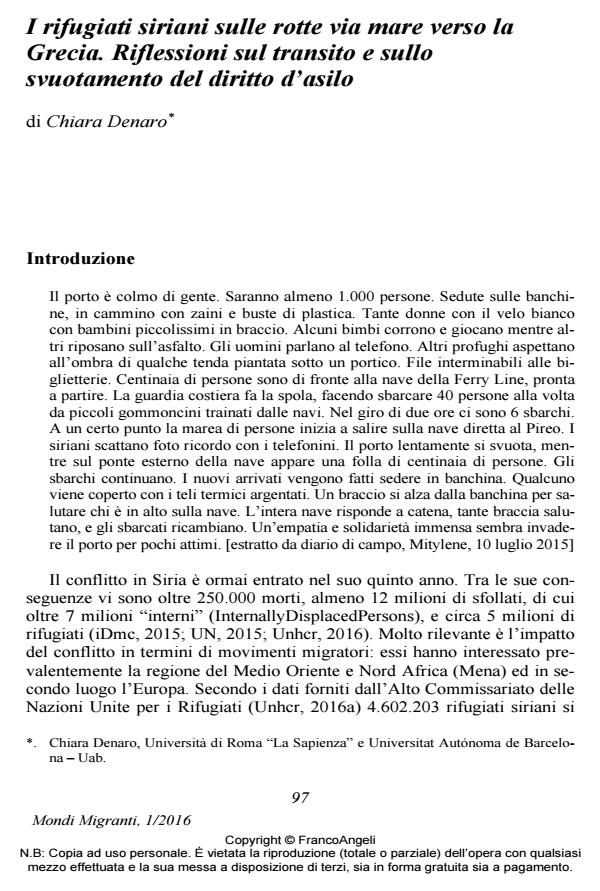Syrian refugees on the seaborne Turkish routes toward Greece. Reflections on transit and the emptying process of the right to asylum
Journal title MONDI MIGRANTI
Author/s Chiara Denaro
Publishing Year 2016 Issue 2016/1
Language Italian Pages 23 P. 97-119 File size 96 KB
DOI 10.3280/MM2016-001006
DOI is like a bar code for intellectual property: to have more infomation
click here
Below, you can see the article first page
If you want to buy this article in PDF format, you can do it, following the instructions to buy download credits

FrancoAngeli is member of Publishers International Linking Association, Inc (PILA), a not-for-profit association which run the CrossRef service enabling links to and from online scholarly content.
In the frame of the evolution of the seaborne migratory routes, which occurred between 2011 and 2015 in the Mediterranean space and the new centrality of the eastern corridor, the article focuses on the Greek Turkish border, intended as a mechanism of differential inclusion (Mezzadra e Neilson, 2013). The configuration of Greece as a transit space on the so-called Balkan route, which includes the crossing of Macedonia, Serbia, Hungary and Austria with the aim of reaching Germany or continuing to other Northern European countries is read in light of the manifest inappropriateness of Greece as a country of asylum, already ascertained by the ECtHR in 2011 and 2014. The article, by interpreting the right to asylum as an ‘access door’ to a room of civil, political and social rights, and by observing its progressive emptying process (Sciurba, 2014), analyses its content in certain border spaces. It is conceptualized in terms of access to the territory, access to the procedure and the refugee status, access to the first accommodation. The article ends with a reflection on refugees’ transit throughout Europe, which takes shape in the form of empowerment and resistance, and seems to be deeply connected with the emptying process of the right to asylum.
Keywords: Asylum, Greece, migratory routes, transit, agency, Syrian refugees
- Bibliographie sélective in Migrations Société /2018 pp.103
DOI: 10.3917/migra.174.0103 - Bibliographie sélective in Migrations Société /2023 pp.121
DOI: 10.3917/migra.191.0121
Chiara Denaro, I rifugiati siriani sulle rotte via mare verso la Grecia. Riflessioni sul transito e sullo svuotamento del diritto d’asilo in "MONDI MIGRANTI" 1/2016, pp 97-119, DOI: 10.3280/MM2016-001006